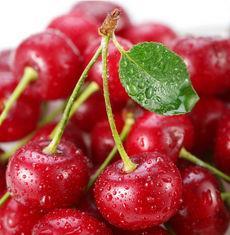
It’s a mixed picture on stonefruit this season and arguably a story of missed opportunity for growers. On cherries in particular, a major chance for import replacement may have been missed thanks to a lack of communication between the production side of the supply chain and the supermarkets.
There has been a mixture of praise and criticism for supermarkets in equal measure this season. Firmly in the favourite camp is Sainsbury’s, which followed up its announcement that it was dropping the specifications on English cherries by declaring that from this week all of its cherry lines would be 100 per cent domestic fruit.
According to Sainsbury’s fresh produce technologist Theresa Huxley, the supermarket has been building up to 100 per cent supply for the last four years. “It has taken time for me to build up my knowledge of cherry production and also to gain the confidence of the British growers and most important for us to develop direct communications so that I can be confident about both quality and availability,” she says.
Weather-permitting, Sainsbury’s will look to have 100 per cent availability on English cherries when in season from now on, Huxley adds, as part of the supermarket’s overall commitment to British produce wherever possible. That commitment has included taking 80 per cent of the British apricot supply this season, with the Kent-grown Tomcot variety hitting shelves last weekend.
But while Sainsbury’s has been praised, certain other retailers have come under fire for stocking imported cherries at a time of abundant domestic supply. However it is not necessarily their fault, argues Adrian Barlow, representative for the newly formed English Stone Fruit Group.
“As a criticism of the industry there must be an improvement in crop forecasting,” he says. “Some marketing organisations said they had forecasts from growers on a Friday for the following week and then found they had almost picked that whole forecast by the Monday. Retailers will have made sure that any predicted shortfall is covered by imports. So the argument is ‘the supermarkets aren’t supporting us’ but they don’t have a chance. The production side must be better at predicting and communicating that information to retailers with a couple of weeks’ notice to restrict imports.”
Cherries have been the star performer in the stonefruit category from a sales perspective over the past year, with a 14.8 per cent increase to £74 million [Kantar Worldpanel, 52 w/e 11 July]. However much of that rise was thanks to a 10.2 per cent hike in the average selling price as weather problems restricted supply and retailers were forced to pay more.
Nevertheless the improvement is promising and producers are confident that there is significant opportunity to grow a category that is increasingly popular with shoppers.
It is to do precisely this that the English Stone Fruit Group was tentatively formed earlier this month. With 10 organisations involved, the group hopes to avoid situations like the mess that hit the plum sector last year when forecasts were wide of the mark and crops were thrown away and left to rot on trees.
This season is effectively a trial period for the group - which is being managed by English Apples & Pears - and the various parties are set to meet at the end of the season and discuss how best to progress. That may include a restructuring of EAP, but how exactly it will take shape remains to be seen.
“We are moving in the right direction, but not as quickly as I would like,” says Barlow.
Away from cherries and it has been a challenging year from a stonefruit sales perspective, with overall category value slipping 0.4 per cent to £324.1m. Within that only apricots had much to cheer, with 6.3 per cent growth, albeit from a low base.
Peaches and plums lost significant value with 10 and 7.2 per cent declines respectively to £41.1m and £103.3m.
There might have been a 5.8 per cent increase in peach volume sales, but with price and penetration both falling, the sector has a number of issues to resolve.
Plum prices fell over the last year as a result of the supply/demand imbalance which has blighted the sector over the past two years. With plenty of fruit around last year, prices plummeted. Communication and forecasting will be key over the coming 12 months.



